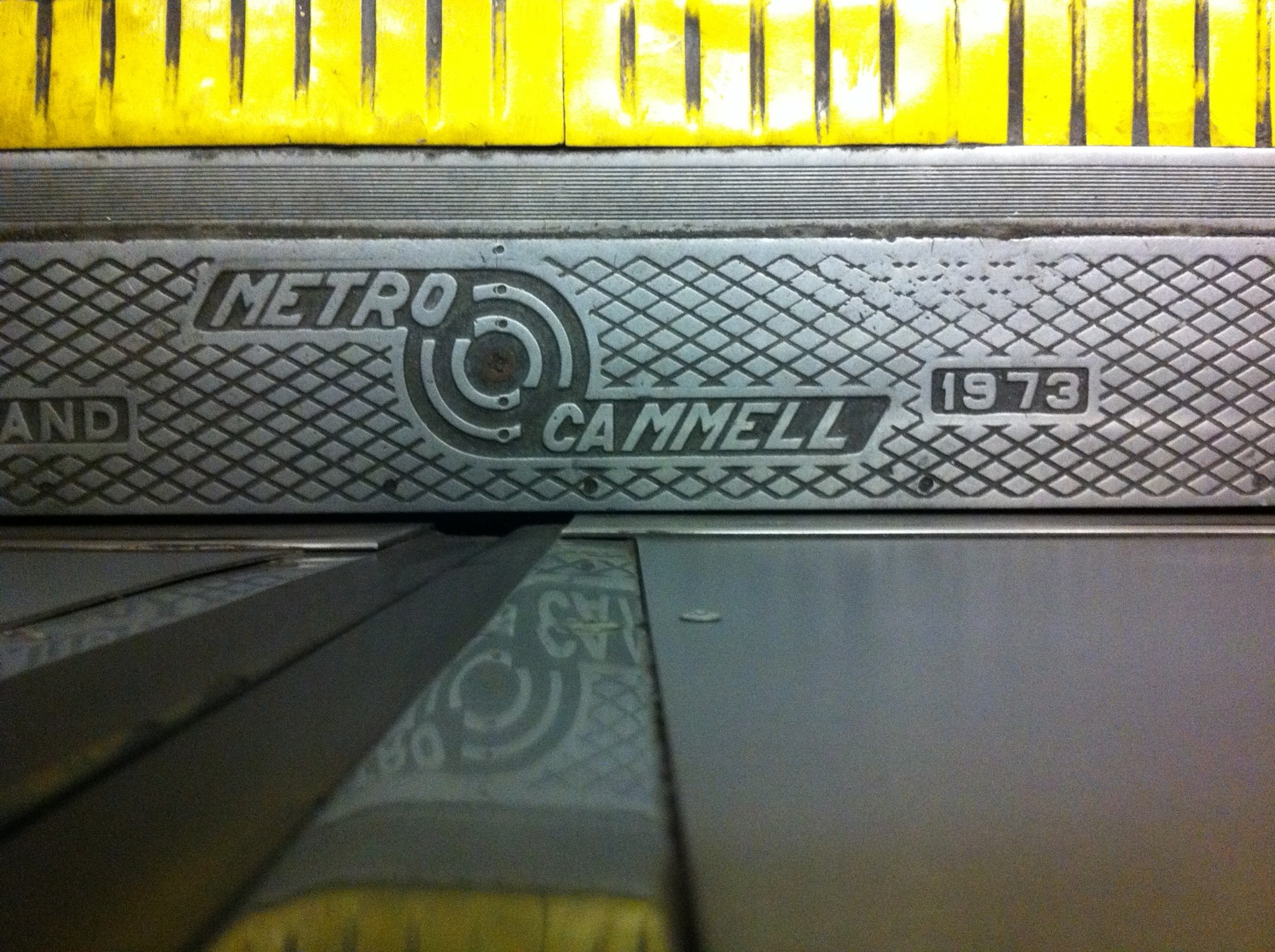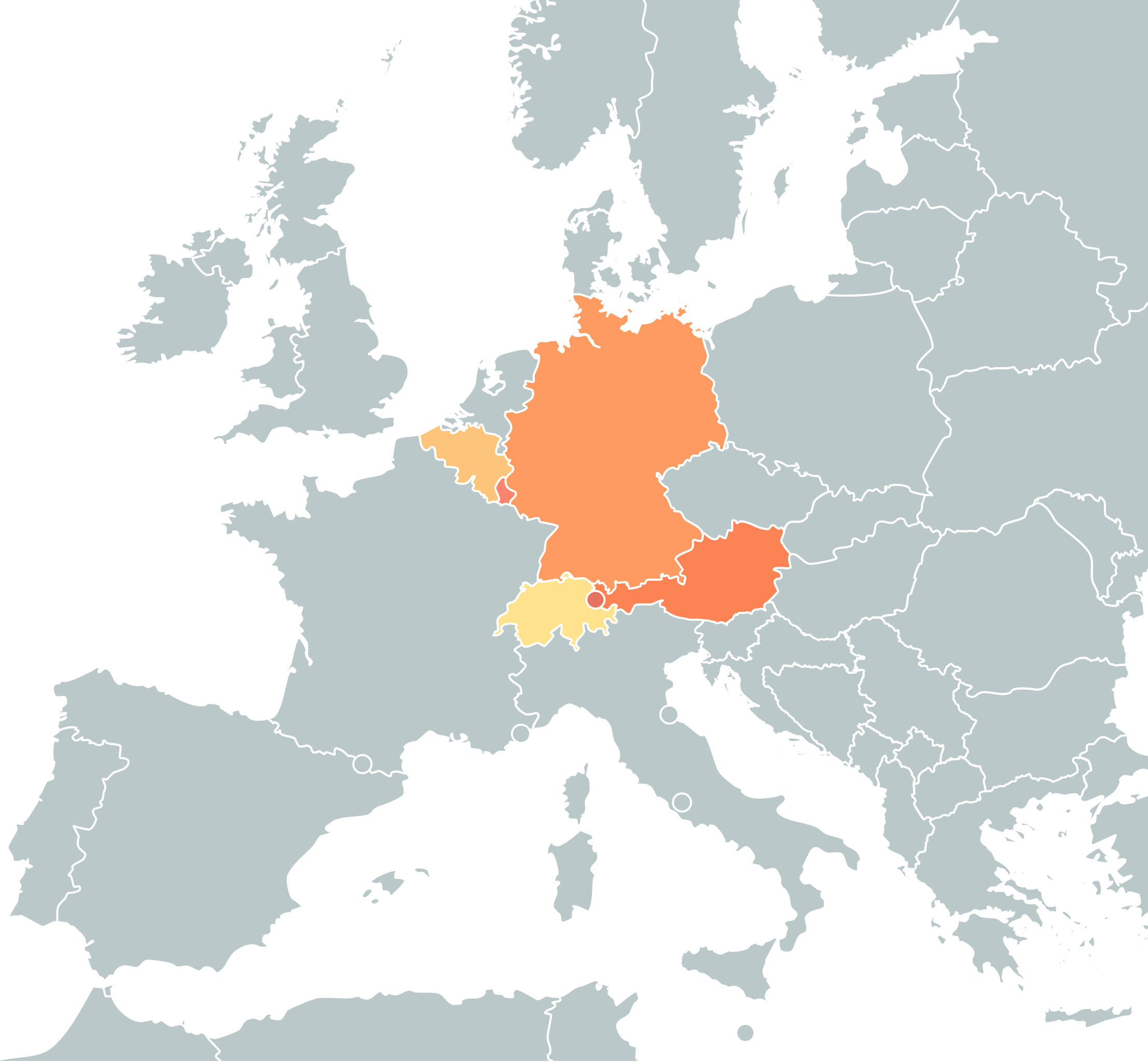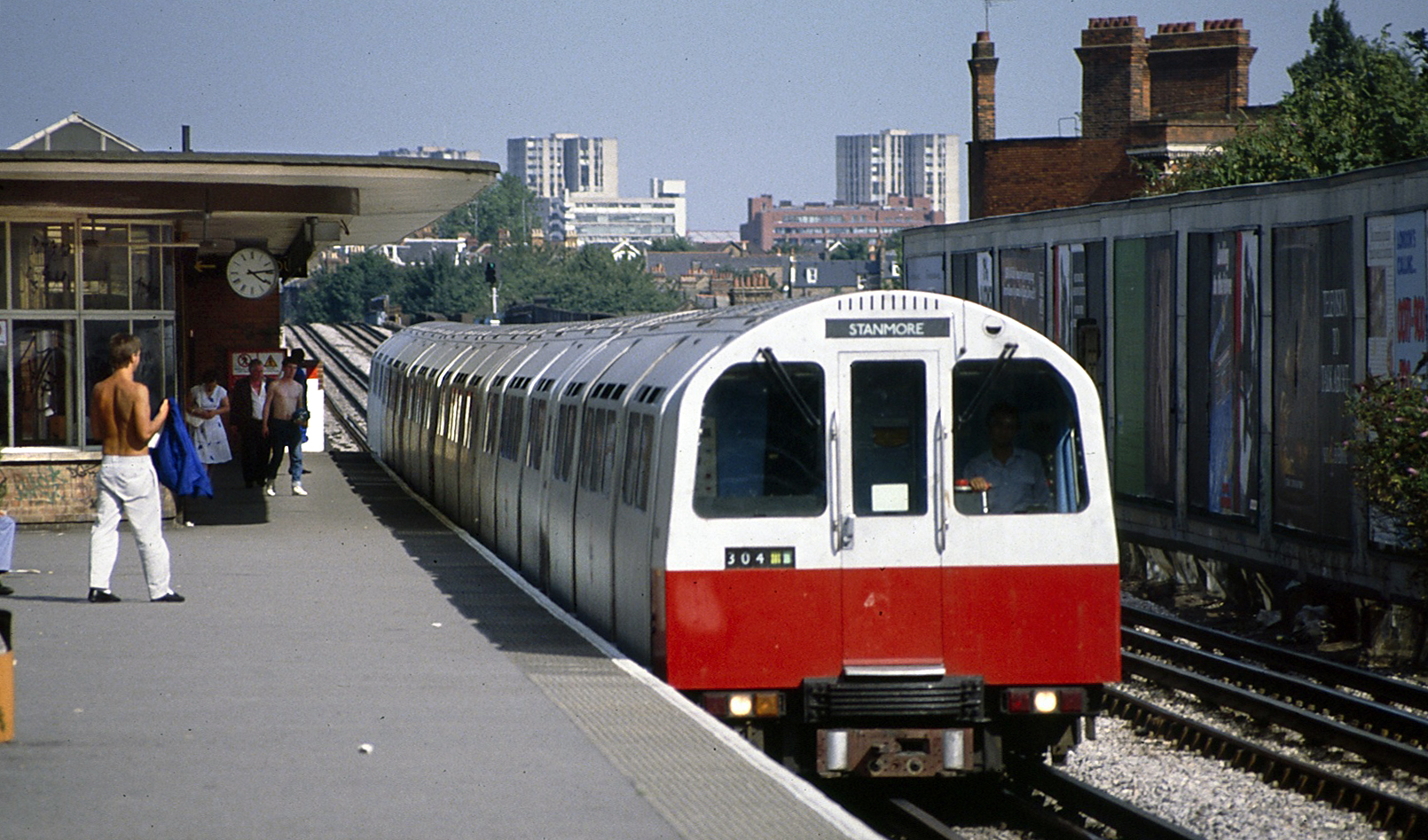|
D Stock
The London Underground D78 Stock, commonly referred to as D Stock, was a type of sub-surface rolling stock which operated on the District line of the London Underground, except on the Wimbledon to Edgware Road service. The first units were withdrawn in January 2015 with the last withdrawn on 21 April 2017. History The D stock was ordered in 1976 to replace the pre-war CO/ CP Stock and post-war R Stock on the District line. Seventy-five six-car trains were built by Metro-Cammell, Washwood Heath, the first entering service on 28 January 1980 with last delivered in 1983. Details The D Stock consisted of six-car trains, as opposed to the seven-car trains of CO/CP and R Stock, whose cars were shorter: under normal operation, each train consisted of two 3-car units, and 20 of the units are double-ended to allow 3-car operations under exceptional circumstances. The traction motors were the same LT118 type as on 1973 Tube Stock, and the bogies are same, unlike other subsurface ro ... [...More Info...] [...Related Items...] OR: [Wikipedia] [Google] [Baidu] |
Metro-Cammell
Metro-Cammell, formally the Metropolitan Cammell Carriage and Wagon Company (MCCW), was an English manufacturer of railway carriages, locomotives and railway wagons, based in Saltley, and subsequently Washwood Heath, in Birmingham. Purchased by GEC Alsthom in May 1989, the Washwood Heath factory was closed in 2005. The company designed and built trains for the railways in the United Kingdom and overseas, including the Mass Transit Railway of Hong Kong, Kowloon–Canton Railway (now East Rail line), the Channel Tunnel, and the Tyne and Wear Metro, and locomotives for Malaysia's Keretapi Tanah Melayu. Diesel and electric locomotives were manufactured for South African Railways, Nyasaland Railways, Malawi, Nigeria, Trans-Zambezi Railway and Pakistan. DMUs were supplied to Jamaica Railway Corporation and the National Railways of Mexico. The vast majority of London Underground rolling stock manufactured in mid-20th century was produced by the company. It also designed and ... [...More Info...] [...Related Items...] OR: [Wikipedia] [Google] [Baidu] |
D78 Stock Pressrun 0087 , Admiralty modified W class destroyer built for the Royal Navy
*London Underground D78 Stock, type of sub-surface rolling stock which operated on the District line of the London Underground
{{Letter-Number Combination Disambiguation ...
D78 may refer to: * D. 78, Aria "Son fra l’onde" for soprano and piano, composed by Franz Schubert in 1813 * HMS Archer (D78), Long Island-class escort carrier built by the US in 1939–1940, operated by the Royal Navy during World War II * HMS Vidette (D78), Admiralty V class destroyer of the Royal Navy *HMS Wolverine (D78) HMS ''Wolverine'' was an Admiralty modified W-class destroyer built for the Royal Navy. She was one of four destroyers ordered in April 1918 from James Samuel White & Co Ltd under the 14th Order for Destroyers of the Emergency War Programme ... [...More Info...] [...Related Items...] OR: [Wikipedia] [Google] [Baidu] |
London Underground A60 And A62 Stock
The London Underground A60 and A62 Stock, commonly referred to as A Stock, was a type of sub-surface rolling stock which operated on the Metropolitan line of the London Underground from 12 June 1961 to 26 September 2012, and on the East London line from 1977 until 22 December 2007, when it closed to be converted into London Overground (except in 1986, when one-man operation conversion of the fleet took place). The stock was built in two batches (A60 and A62) by Cravens of Sheffield in the early 1960s, and replaced all other trains on the line. At the time of its withdrawal in September 2012, the stock was the oldest on the Underground. It was the only stock to have luggage racks, umbrella hooks and separate power and braking controls, and the last stock not to have any automated announcements. Development and introduction The design was formulated by W S Graff-Baker of the London Passenger Transport Board, as part of the electrification of the Metropolitan line from to ... [...More Info...] [...Related Items...] OR: [Wikipedia] [Google] [Baidu] |
High Street Kensington Tube Station
High Street Kensington is a London Underground station on Kensington High Street, in Kensington. The station is on the Circle line between Gloucester Road and Notting Hill Gate, and the District line between Earl's Court and Notting Hill Gate and is in Travelcard Zone 1. Kensington Arcade forms the entrance to the station. Services The station itself has four platforms─two through platforms and two bay platforms. Platform 1 is used for anticlockwise Circle line and westbound District line trains towards Gloucester Road and Earl's Court respectively. Platform 2 is for clockwise Circle line and eastbound District line trains towards Edgware Road. Platforms 3 and 4 are used for terminating District line trains from Earl's Court. Platform 3 is usually used for the Olympia service, which runs weekends and for special events, and platform 4 is usually only used at the start and end of the day. There used to be a waiting room between Platform 2 and 3 for customer use, b ... [...More Info...] [...Related Items...] OR: [Wikipedia] [Google] [Baidu] |
German Language
German ( ) is a West Germanic language mainly spoken in Central Europe. It is the most widely spoken and official or co-official language in Germany, Austria, Switzerland, Liechtenstein, and the Italian province of South Tyrol. It is also a co-official language of Luxembourg and Belgium, as well as a national language in Namibia. Outside Germany, it is also spoken by German communities in France ( Bas-Rhin), Czech Republic (North Bohemia), Poland ( Upper Silesia), Slovakia (Bratislava Region), and Hungary ( Sopron). German is most similar to other languages within the West Germanic language branch, including Afrikaans, Dutch, English, the Frisian languages, Low German, Luxembourgish, Scots, and Yiddish. It also contains close similarities in vocabulary to some languages in the North Germanic group, such as Danish, Norwegian, and Swedish. German is the second most widely spoken Germanic language after English, which is also a West Germanic language. German ... [...More Info...] [...Related Items...] OR: [Wikipedia] [Google] [Baidu] |
French Language
French ( or ) is a Romance language of the Indo-European family. It descended from the Vulgar Latin of the Roman Empire, as did all Romance languages. French evolved from Gallo-Romance, the Latin spoken in Gaul, and more specifically in Northern Gaul. Its closest relatives are the other langues d'oïl—languages historically spoken in northern France and in southern Belgium, which French (Francien) largely supplanted. French was also influenced by native Celtic languages of Northern Roman Gaul like Gallia Belgica and by the ( Germanic) Frankish language of the post-Roman Frankish invaders. Today, owing to France's past overseas expansion, there are numerous French-based creole languages, most notably Haitian Creole. A French-speaking person or nation may be referred to as Francophone in both English and French. French is an official language in 29 countries across multiple continents, most of which are members of the '' Organisation internationale de la Francopho ... [...More Info...] [...Related Items...] OR: [Wikipedia] [Google] [Baidu] |
English Language
English is a West Germanic language of the Indo-European language family, with its earliest forms spoken by the inhabitants of early medieval England. It is named after the Angles, one of the ancient Germanic peoples that migrated to the island of Great Britain. Existing on a dialect continuum with Scots, and then closest related to the Low Saxon and Frisian languages, English is genealogically West Germanic. However, its vocabulary is also distinctively influenced by dialects of France (about 29% of Modern English words) and Latin (also about 29%), plus some grammar and a small amount of core vocabulary influenced by Old Norse (a North Germanic language). Speakers of English are called Anglophones. The earliest forms of English, collectively known as Old English, evolved from a group of West Germanic ( Ingvaeonic) dialects brought to Great Britain by Anglo-Saxon settlers in the 5th century and further mutated by Norse-speaking Viking settlers starting in ... [...More Info...] [...Related Items...] OR: [Wikipedia] [Google] [Baidu] |
Joystick
A joystick, sometimes called a flight stick, is an input device consisting of a stick that pivots on a base and reports its angle or direction to the device it is controlling. A joystick, also known as the control column, is the principal control device in the cockpit of many civilian and military aircraft, either as a centre stick or side-stick. It often has supplementary switches to control various aspects of the aircraft's flight. Joysticks are often used to control video games, and usually have one or more push-buttons whose state can also be read by the computer. A popular variation of the joystick used on modern video game consoles is the analog stick. Joysticks are also used for controlling machines such as cranes, trucks, underwater unmanned vehicles, wheelchairs, surveillance cameras, and zero turning radius lawn mowers. Miniature finger-operated joysticks have been adopted as input devices for smaller electronic equipment such as mobile phones. Aviation Joy ... [...More Info...] [...Related Items...] OR: [Wikipedia] [Google] [Baidu] |
Dead Man's Handle
A dead man's switch (see alternative names) is a switch that is designed to be activated or deactivated if the human operator becomes incapacitated, such as through death, loss of consciousness, or being bodily removed from control. Originally applied to switches on a vehicle or machine, it has since come to be used to describe other intangible uses, as in computer software. These switches are usually used as a form of fail-safe where they stop a machine with no operator from a potentially dangerous action or incapacitate a device as a result of accident, malfunction, or misuse. They are common in such applications in locomotives, aircraft refuelling, freight elevators, lawn mowers, tractors, personal watercraft, outboard motors, chainsaws, snowblowers, tread machines, snowmobiles, amusement rides, and many medical imaging devices. On some machines, these switches merely bring the machines back to a safe state, such as reducing the throttle to idle or applying brakes while le ... [...More Info...] [...Related Items...] OR: [Wikipedia] [Google] [Baidu] |
Suspension (vehicle)
Suspension is the system of tires, tire air, springs, shock absorbers and linkages that connects a vehicle to its wheels and allows relative motion between the two. Suspension systems must support both road holding/handling and ride quality, which are at odds with each other. The tuning of suspensions involves finding the right compromise. It is important for the suspension to keep the road wheel in contact with the road surface as much as possible, because all the road or ground forces acting on the vehicle do so through the contact patches of the tires. The suspension also protects the vehicle itself and any cargo or luggage from damage and wear. The design of front and rear suspension of a car may be different. History An early form of suspension on ox-drawn carts had the platform swing on iron chains attached to the wheeled frame of the carriage. This system remained the basis for most suspension systems until the turn of the 19th century, although the iron cha ... [...More Info...] [...Related Items...] OR: [Wikipedia] [Google] [Baidu] |
Jubilee Line
The Jubilee line is a London Underground line that runs between in east London and in the suburban north-west, via the Docklands, South Bank and West End. Opened in 1979, it is the newest line on the Underground network, although some sections of track date back to 1932 and some stations to 1879. The western section between and was previously a branch of the Metropolitan line and later the Bakerloo line, while the newly built line was completed in two major sections: initially in 1979 to , then in 1999 with an extension to Stratford. The later stations are larger and have special safety features, both aspects being attempts to future-proof the line. Following the extension to east London, serving areas once poorly connected to the Underground, the line has seen a huge growth in passenger numbers and is the third-busiest on the network (after the Northern and Central lines), with over 213 million passenger journeys in 2011/12. Between and the Jubilee line shares ... [...More Info...] [...Related Items...] OR: [Wikipedia] [Google] [Baidu] |


_-_geograph.org.uk_-_1506771.jpg)



.png)
